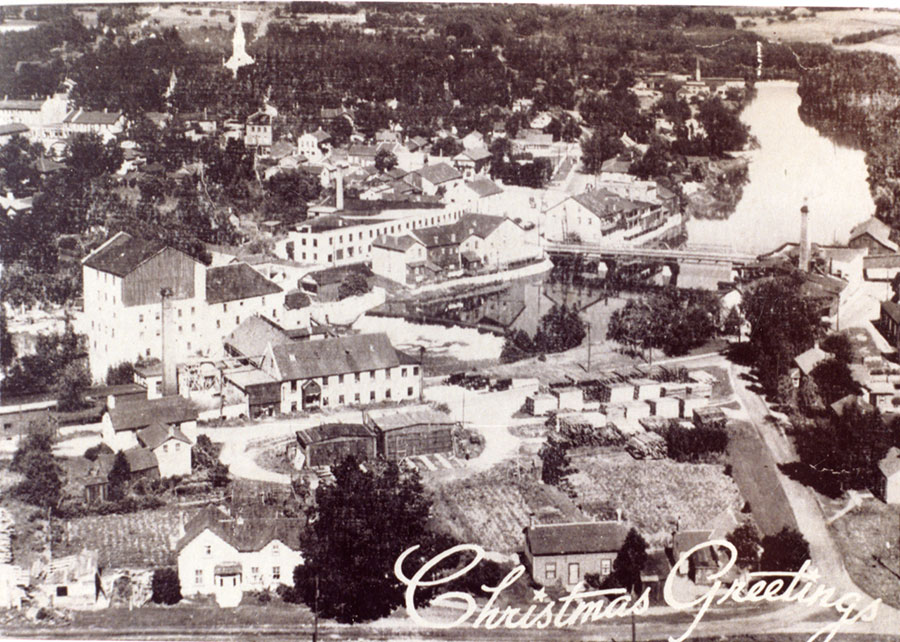The following is a re-print of a past column by former Advertiser columnist Stephen Thorning, who passed away on Feb. 23, 2015.
Some text has been updated to reflect changes since the original publication and any images used may not be the same as those that accompanied the original publication.
Years ago, most Elora retailers presented their regular customers with calendars about this time of the year.
Many also sent out Christmas cards. Until recently, these were an inexpensive form of greeting. Postage for in-town cards was one cent into the 1950s, and three cents as late as 1967.
One year in the late 1940s, Elora druggist Erv Murray outdid his competitors with an aerial photograph of Elora. The picture shows Elora on a sunny midday in the summer, rather than a winter scene as might be expected on a Christmas card.
Nevertheless, it gives us an excellent picture of Elora when the village had a strong manufacturing base. I believe the date is 1946 or 1947. Perhaps a reader of this column can pinpoint it more precisely (the Wellington County Archives has dated it to 1948).
The most prominent feature of the picture is the southside plant of the J.C. Mundell Co., which was destroyed by fire in 1955.
The factory is on the bank of the river, and two drying kilns are in front of it. Piles of lumber are stored to dry between the factory and Ross Street.
Guelph Road is at the very bottom of the picture. North of Ross Street it is nothing more than two ruts with grass between them. It would later be the way to the main entrance of the Elora Gorge Park. The new bridge on Wellington Road 7 was still decades in the future.
The Walser furniture plant is at the right side of the picture, and the Victoria Street bridge is the only way to cross the Grand River at Elora; the Badley Bridge wasn’t built until the early 1950s.
Mundell’s finishing plant completely dominates Mill Street, and a close look shows that the Commercial Hotel’s stone livery stable is still standing, behind the service station at the Metcalfe Street corner (at the time it was BA; much later it became Petro-Canada).
Upstream is the Fleury-Bissell farm implement plant, partially obscured by trees, and the Bissell dam on the river.
The residential part of Elora, east of Geddes Street, looks more like a forest than a village, with hundreds of healthy and mature maple trees. The spire of Knox Church is one of the few identifiable structures in this sea of green.
This photograph shows how compact Elora once was, with its factories and mill hugging the river, and industrial, commercial and residential buildings in close proximity.
The lack of motor cars is also a striking feature. Few cars, either parked or moving, are on the streets.
The Mundell factory in the foreground would have had between 70 and 100 employees, but there are only four cars in its small parking lot.
*This column was originally published in the Elora Sentinel on Dec. 24, 1993.




